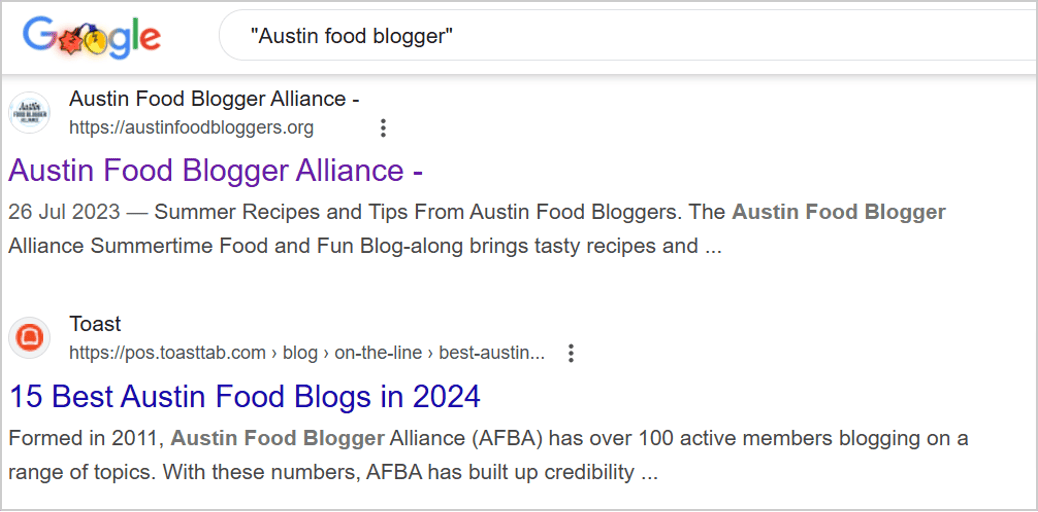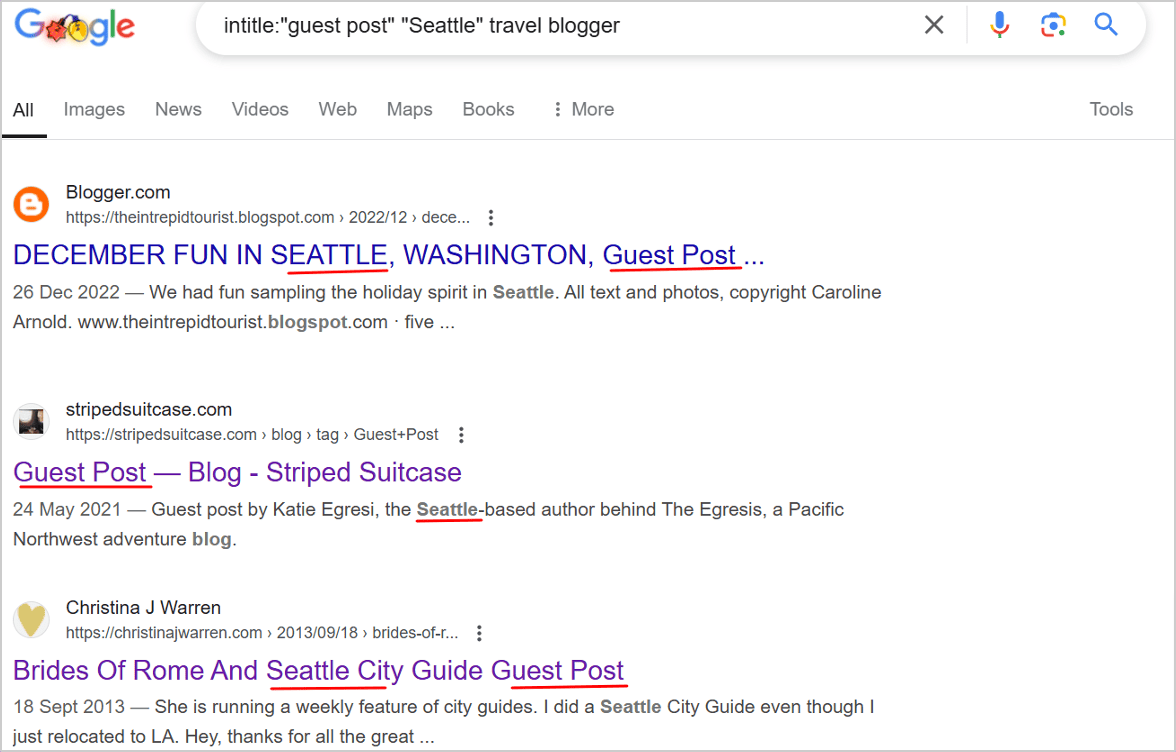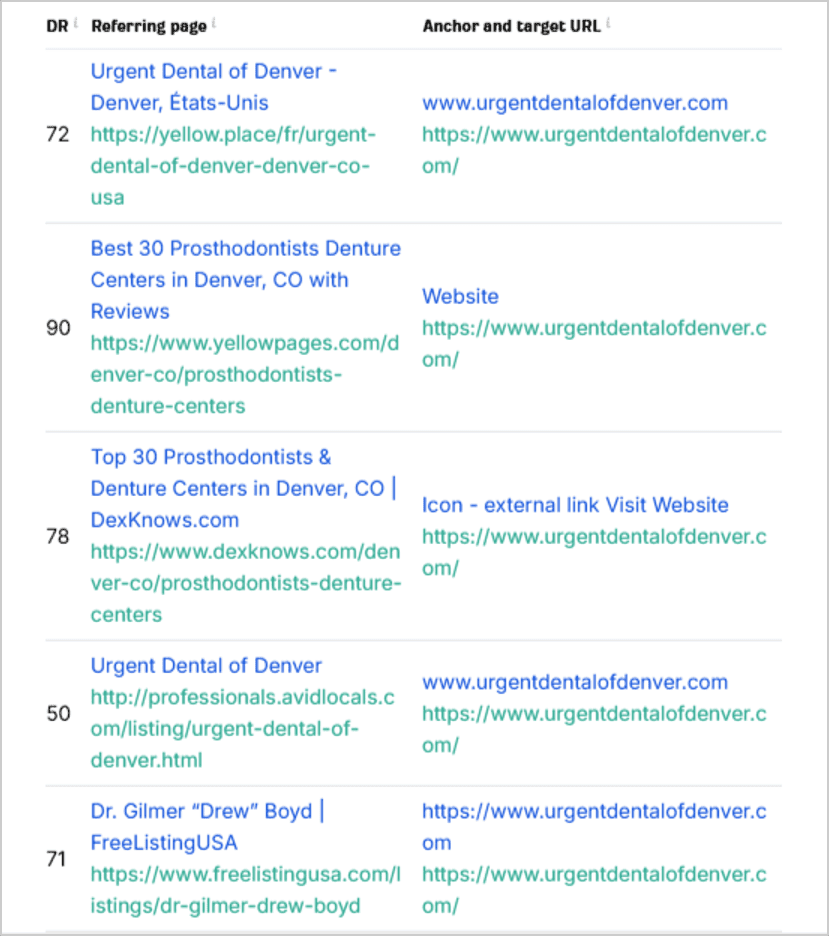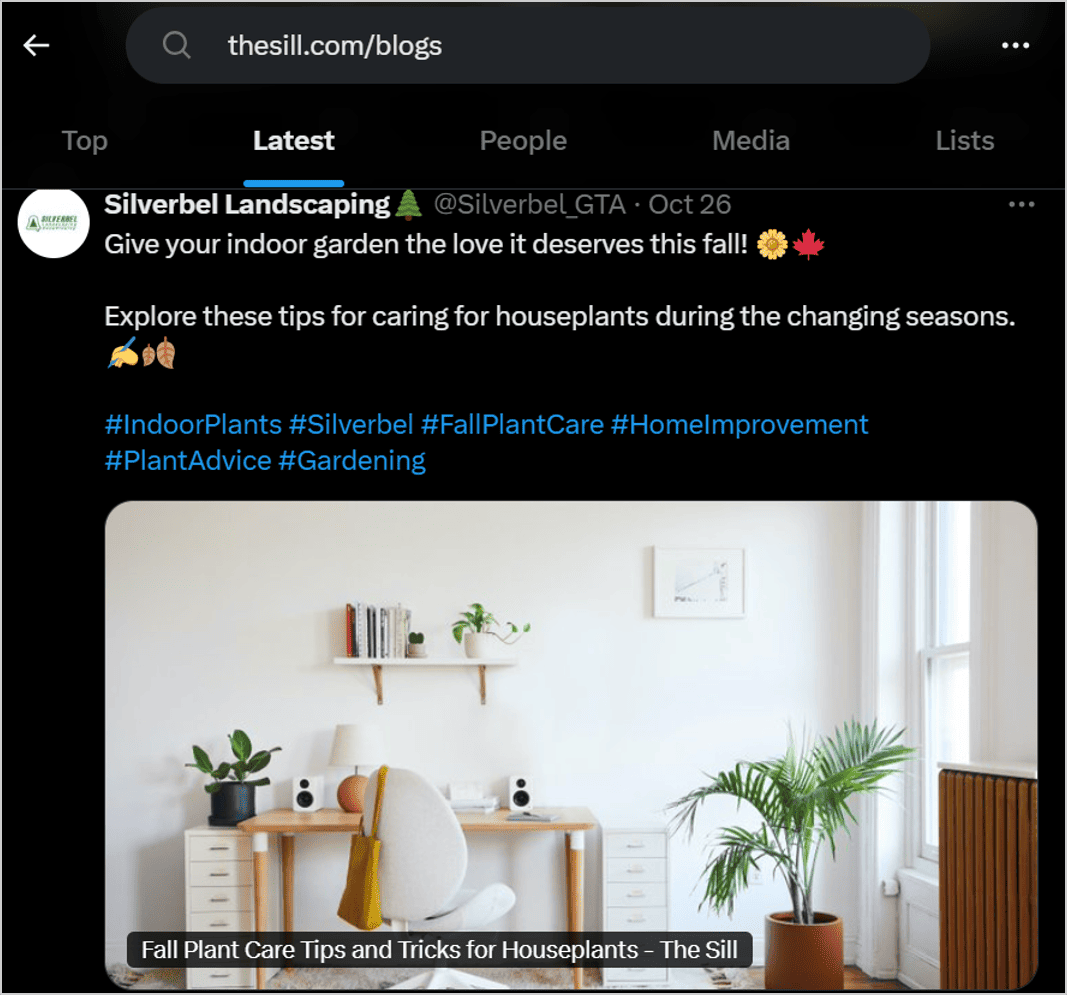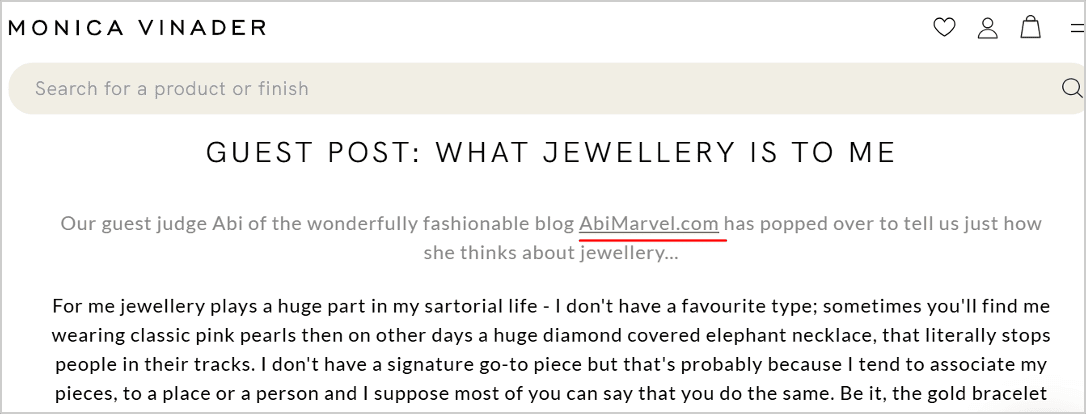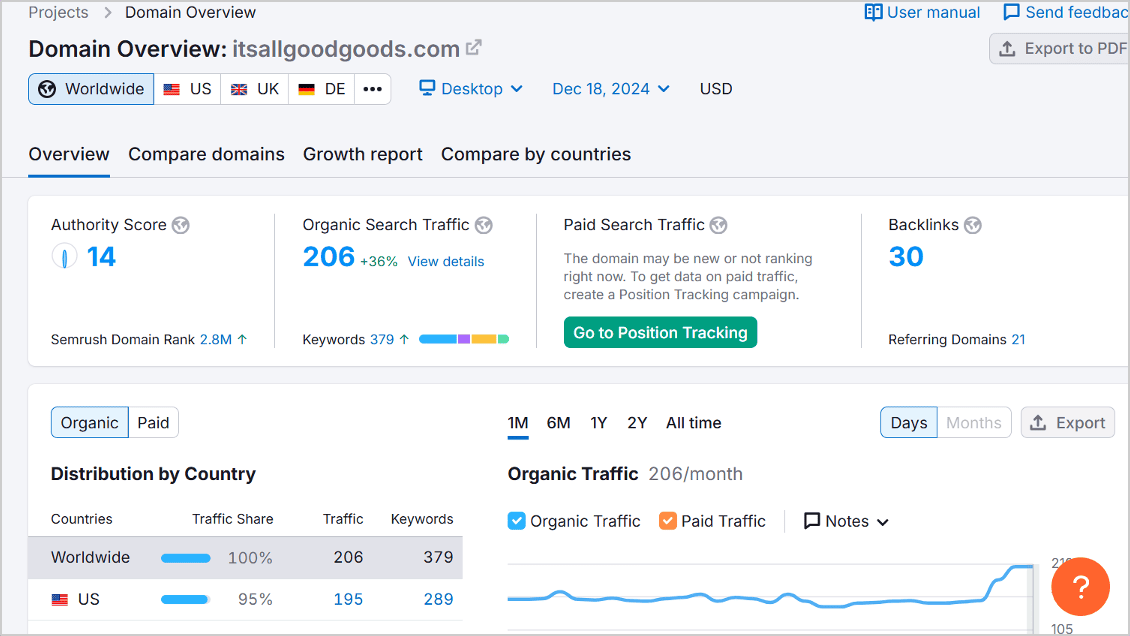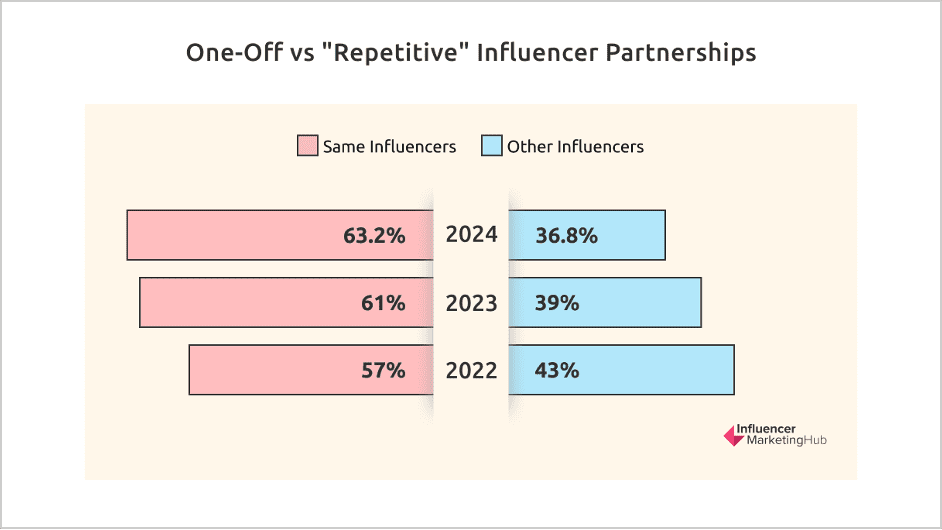Considering influencer marketing for local SEO is a smart move. Most people think of influencers as tools for social media buzz but rarely think they can work wonders for SEO, let alone local SEO.
But you? You’re not just getting likes and comments. You’re building your website’s local authority so Google trusts you enough to show your products, services, or content to people searching nearby.
To make this work, you can’t pick a random influencer. Get someone with real credibility in your area who can help you expand your local SEO visibility, whether by ranking for local keywords, driving targeted traffic, or landing some valuable backlinks.
In this article, we’ll show you how to identify and collaborate with the right influencers for maximum SEO benefits. Let’s get into it!
Why Should You Use Local Influencers for SEO Campaigns?
Local influencers have an established audience in your area, making them ideal for reaching the right people. Many fall within the nano and micro-influencer tiers, which typically get 2.53 percent and 1.06 percent higher engagement rates than larger accounts, according to HypeAuditor.
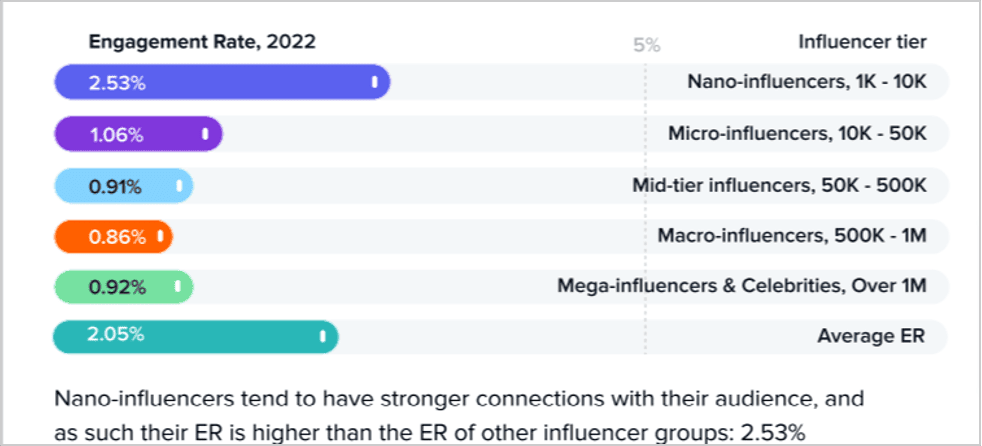
What makes them so effective is their strong connection to their communities. They reflect the local culture, trends, and values, which makes their recommendations feel more genuine and relatable.
This builds trust with their audience and encourages them to take action, whether that’s visiting your store, attending an event, or trying your product. These actions create valuable SEO signals like website visits, check-ins, and reviews that boost your website and Google Business Profile (GBP) rankings.
What are the Criteria for Choosing Local Influencers for SEO?
Picking the wrong influencer can waste your campaign budget and hurt your brand image. That’s why it’s crucial to choose carefully. Here are the key criteria to consider:
Alignment With Your Goal
Before picking an influencer, you need to know “why” you’re doing it. Are you aiming to improve your website traffic, expand brand visibility, get more local customers through the door, or build backlinks? Different goals require different influencer types.
For example, if you’re a boutique looking for foot traffic, a local fashion blogger with an engaged audience is your best bet. If you’re a restaurant aiming for backlinks, a food blogger who loves writing detailed reviews on their blog can deliver results.
Either way, always ask yourself: does this influencer align with what I’m trying to achieve?
To figure this out, start by checking out their past work. What kind of content do they create? Do they post detailed blogs, quick Instagram stories, or TikTok videos? Matching their content style to your goals ensures you get the most bang for your buck.
Local and Niche Authority
You’re not just looking for someone with a ton of followers; you want someone influential in your local area or niche. Why? Because local influencers know your community—they can connect with your potential customers in a way that big-name influencers can’t.
For instance, a yoga studio in Denver will get way more value from a local wellness influencer than a global fitness guru. The local influencer’s audience is likely already nearby, making them more likely to check out your studio.
To assess their local authority, pay attention to their engagement with other local businesses or events. Do they mention places around town? Do their followers comment about local stuff?
These are good signs they’re rooted in your community.
Authenticity and Effectiveness
Authenticity beats vanity metrics. Every. Single. Time. A million followers mean nothing if they’re bots or disengaged. Hence, look for influencers who genuinely interact with their audience, have a reasonably consistent engagement rate and have a history of delivering results.
You can assess these with a bit of observation, but using a tool is easier.
One tool to try is Influence Hero’s fake follower checkers: it’s free and has a version for different platforms. You only need to enter the influencer’s URL handle, and you’ll get a detailed performance report, including their fake follower rate, like this:
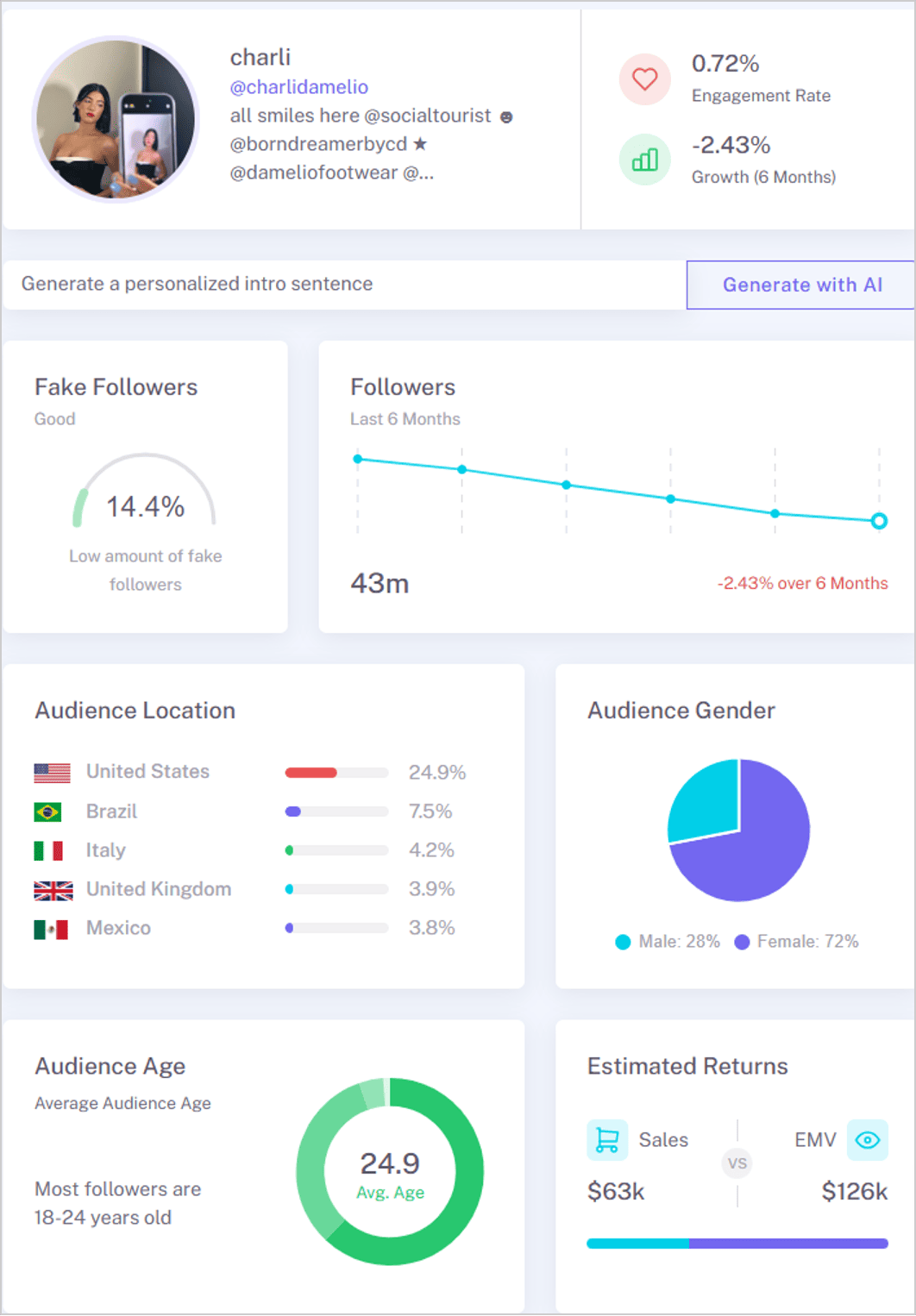
How to Find Local SEO Influencers: Tools and Techniques
Now, you know what to look for in an influencer, but how do you find them? Fortunately, there are several manual and automated ways. Let’s check them out:
Social Media Search
There isn’t a more direct way to find local influencers than social media.
Platforms like Instagram, X, and LinkedIn are full of people tagging their location and using hashtags and keywords related to their niche, making it easy to discover them.
Finding influencers on most platforms follows the same pattern. Type in variations of keywords they’re likely to use in their content. For example, to find a Denver food influencer, use terms like “Denver Foodie,” “Denver Foods,” or hashtags like #DenverFoodTour. You can also search for keywords related to the latest events or trending products in your location and niche.
Platforms like LinkedIn and X offer various filters to narrow your search—don’t hesitate to use them.
Another strategy is to search using hashtags of successful campaigns in your region. This helps you find the influencers behind the campaigns and approach them.
Don’t choose an influencer based on a single post. Go through their profile and ensure they consistently cover topics related to your niche with engagement that matches their follower count.
Influencer Marketing Tools
If you need a faster, more organized, and scalable way to find influencers, use influencer marketing tools. They have powerful filters and features that make it easier to manage your influencers and campaigns. Try out these three:
1. Upfluence

If you want to kill multiple birds with one stone, Upfluence is your go-to.
This platform lets you find influencers across every major platform — YouTube, X, Instagram, Twitch, TikTok, and even blogs. Its robust search filter narrows your search by country, state, city, and even distance in kilometers. This helps you ensure you’re partnering with influencers as close to you as possible.
Upfluence has a free Chrome extension for analyzing influencers’ profiles to quickly assess whether they’re for your brand. For the full app, contact the sales team for custom pricing.
2. HypeAuditor

HypeAuditor is a solid tool for finding influencers and planning influencer marketing campaigns. It’s popular for its fraud detection feature, which helps identify fake followers and bot-generated comments.
It’s useful for major platforms like Instagram, YouTube, TikTok, Twitch, and X. You can only filter location by country, state, and city. It can help you find look-alike influencers to those you’ve already worked with, and its social listening tool suggests influencers who are a good fit for your brand.
HypeAuditor offers a free trial, and full access is based on custom request pricing.
3. Klear
Klear is like a full-on search engine for influencer marketing. It lets you find, analyze, engage, and manage influencers all in one platform. It supports Instagram, TikTok, YouTube, and X.
One cool feature of Klear is its list of vetted and tried influencers, which saves you time authenticating them yourself.
For location, you can search up to city level, and you have the option to prioritize either the influencer’s location or their audience’s location, depending on your campaign needs.
Pricing is available on request, and there’s no free trial.
Google Search
Google is, without a doubt, the most versatile tool on this list. You can use it to search for influencers across the internet, but to get the most out of it, you’ll need to use search operators. These help narrow down your results and make your search more specific. Some easy-to-use search operators include:
- Using quotes for exact phrasesExample: “Austin food blogger” to find people specifically in that niche.
- Using “site:” to narrow your search to specific platformsExample: site:instagram.com + “Portland photographer” to find Instagram influencers.
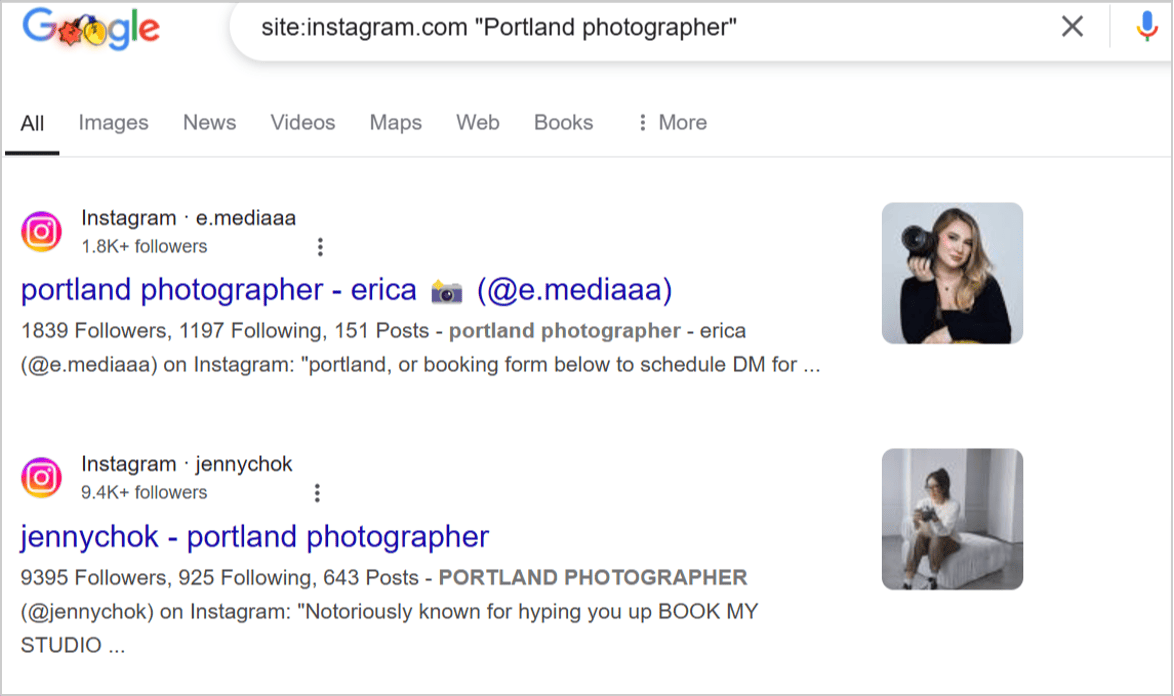
- Adding “intitle:” to find specific blog titlesExample: intitle:”guest post” “Seattle” travel blogger.
These tricks can uncover blogs, guest posts, or influencers who might not pop up in a basic search.
Local Online Communities and Physical Events
Sometimes, the best way to find local influencers is to get out into your community (virtually or in person). Many neighborhoods have Facebook groups dedicated to business networking, local events, or even niche topics like “NYC Vegan Eats.” Influencers often hang out in these spaces to share their content and connect with people who care about the same things.
Often, these groups aren’t just virtual. They organize physical meetups, workshops, or festivals where you can meet and network with influencers face-to-face.
Platforms like Reddit and Nextdoor are also goldmines for finding active contributors in your area. For example, the subreddit “r/BostonFood” might lead you to a local food blogger who’s passionate about showcasing the city’s dining scene.
Reverse Engineer Competitor Strategy
Why reinvent the wheel when your competitors already have a working strategy? By reverse-engineering their approach, you can uncover influencers linking to their website or promoting their content. You can then use that intel to build your own connections.
Start by analyzing your competitor’s backlinks.
Tools like Moz, Ahrefs, or Semrush can help you see who’s linking to their website. For example, let’s say your competitor is Ugent Detal of Denver. Using Ahrefs’ free backlink checker to check the domain backlinks revealed these referring pages.
As you can see, most of the links are coming from local directories showcasing Denver-based businesses, which means getting listed on them can expand your local SEO visibility, including your GMB ranking.
To find local influencers promoting your competitor’s content, head over to X or LinkedIn and type their website or blog URL in the search. You’ll uncover the accounts sharing their content. Filter by Latest and identify creators that can possibly share your content, too. Posts with good engagements should be your top target.
For instance, a quick search for The Sill’s blog (a New York-based plant business) on X reveals lots of people and brands sharing their content. That’s the kind of activity you want to tap into.
After identifying a local influencer for your SEO campaign, the next step is to engage with them.
4 Ways to Engage Local Influencers for SEO
Finding the right influencer is only half the battle. The other half is collaborating with them to achieve tangible local SEO results. Not sure where to begin? Here are some creative ideas to try.
1. Give Your Website or Directory a Backlink
Backlinks act like votes of confidence for your website, but as Backlinko says, “not all backlinks are equal.” The value of a backlink depends on the authority of the source. That’s why backlinks from influential local bloggers are especially valuable for local SEO.
In this case, instead of focusing solely on an influencer’s social media following, look at the authority of their blog, including its domain rating and traffic. When these high authority websites link to your site, it signals to Google that your business is trusted within the local community, boosting your ranking potential in local SERPs.
By partnering with complementary (not competing) businesses, you can secure these links without sabotaging yourself.
If you run a hair salon, for instance, a high-authority nail salon blog could provide a relevant backlink. Similarly, getting listed on local directories or niche community blogs, like Austin Food Bloggers Alliance, can earn you backlinks.
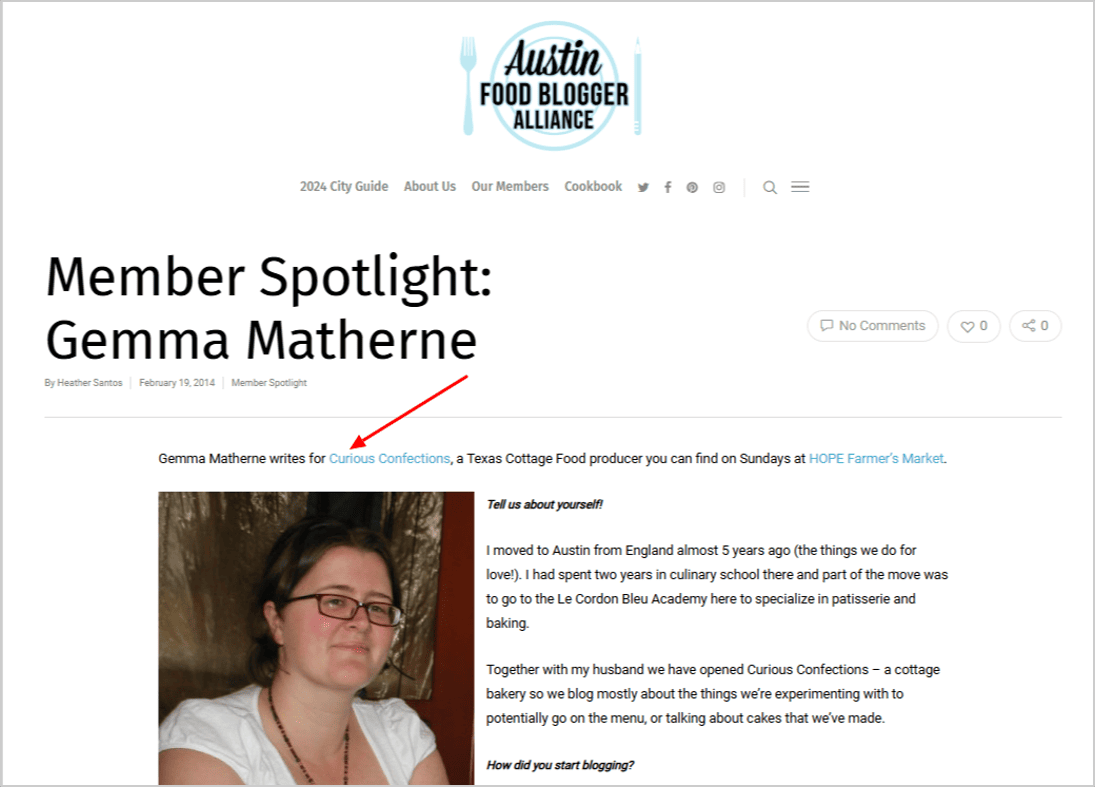
Additionally, sharing your NAP details (Name, Address, Phone) on directories and community blogs improves your citation score, further improving your Google Business Profile rankings.
2. Write Guest Posts on Your Website
Ever considered letting an influencer take over your blog? It’s like inviting a guest chef into your kitchen—it adds fresh, exciting flavors. When influencers contribute to your site, their unique voice not only enriches your content but also draws in their loyal followers.
Take UK jewelry brand Monica Vinader, for example. They teamed up with London-based fashion influencer and blogger Abi Marvel to create a guest post about what fashion means to her.
Don’t let the guest posts collect dust; promote them to your audience and ensure the influencer does the same. To tell the local SEO value of these collaborations, ensure you target a specific keyword with the posts, then use a local rank tracker like keyword.com to monitor the keyword’s performance. If you rank quickly for the keyword, it’s a strong signal that the collaboration is worth repeating.
3. Share or Repost Your Article on Social Media
When local influencers share or repost your content, it can reach far more people than on your page. This extra exposure often brings more engagement (likes, shares, and comments), improving your social signals. While social signals aren’t direct ranking factors, they can help Google view your brand as trustworthy and authoritative, which ties in with EEAT (Experience, Expertise, Authority, Trust) — a key ranking factor.
More importantly, this increased visibility can drive more page visits, and if your content is valuable, it could snowball into additional shares and even backlinks. According to Google’s SEO starter guide, these activities can help them understand the right audience to show your content.
“Sites built around user interaction and sharing have made it easier to match interested groups of people up with relevant content.”
While you can ask influencers to share your existing content, collaborating with them during its creation adds authenticity, making it feel more natural for them to promote. Guest posts are one option, but even simpler strategies like featuring their quotes or co-authoring the piece can work just well.
Don’t forget to tie the content to a keyword and track it. If it’s an existing underperforming post you revamped, you already have a benchmark. Any climb in ranking can signal the influencer’s impact.
4. Make a Review of Your Product
This one’s a classic: You hand your product to influencers. They try it out and craft an authentic, detailed review, also called user-generated content (UGC), on their blog or social media. They might even show how to use the product and encourage their followers to check it out.
The benefits are twofold. First, it can drive a surge of relevant traffic to your site. Second, if it’s a blog review, the influencer has a natural reason to include a backlink to your site.
Take it from Iryna Melnyk, a marketing consultant at JAS agency, who pulled off this strategy beautifully for her client, It’s All Good Goods, a local bakery. Here’s what happened:
“The influencer created a mouth-watering recipe featuring the bakery’s signature bread, complete with gorgeous photos and a backlink to the bakery’s site. They also cross-promoted the content on Instagram Stories and posts, sharing behind-the-scenes moments of the baking process. The result? A 20 percent increase in traffic to the bakery’s website, which was right on target for the campaign.”
The takeaway? Collaborate with influencers with both a blog and a strong social presence to maximize your reach and impact.
How to Collaborate and Nurture Influencer Relationships
Once you’ve picked the influencers you want to work with and figured out how to collaborate, it’s time to reach out. But here’s the thing—generic pitches won’t cut it. Influencers get swamped with those, and if you want to stand out, your message has to feel personal and genuine.
Start with an email or DM genuinely acknowledging their work. Reference a specific post or project they’ve done, and explain why you think they’re a great fit for your campaign. Be clear about what’s in it for them, whether it’s a product, payment, or another mutually beneficial collaboration. Tailoring your offer to their style and values makes it easier for them to say yes.
Building an influencer strategy doesn’t end with onboarding. Maintaining those relationships is key. According to Influencer Marketing Hub’s 2024 State of Influencer Marketing report, more brands are choosing to work with influencers they already know. Why? Because the results are better when there’s trust and familiarity.
So, how do you keep the relationship strong? Mimi Nguyen, founder of the bakery Cafely, who drove a 471.43 percent increase in traffic through local influencer marketing, has this to say:
“My advice for keeping the right influencers for your business is to treat every interaction with them as a way to create lasting partnerships for both your business and their craft. Apt responses to their emails and respect for their brand are other things to keep in mind when reaching out!”
When influencers feel valued and supported, they’re more likely to work with you again and may even promote your brand organically. Relationships matter, so invest in them.
Monitor and Measure Campaign Success
Once your influencer campaign is up and running, track the impact to see if it’s hitting your local SEO goals. The good news? There are plenty of tools to help you measure success.
Start by monitoring website traffic using third-party tools like Ahrefs or Google Analytics. Ahrefs can show you the number of backlinks your campaigns have earned and the referral traffic they generate. If you notice a spike in visits from an influencer’s guest blog or promoted content, that’s a great sign your campaign is working.
Next, keep an eye on keyword performance. Using a dedicated local rank tracker like Keyword.com saves you the stress of manual checks. It notifies you promptly of any change in ranking and gives you access to historical data so you can compare the ranking differences at various stages of the campaign lifecycle.
Want to try out Keyword.com? Sign up and set up your campaign this way:
Create a project and give it a specific name, like “Local Influencer Marketing Campaign,” for easy tracking.
Enter your domain and the keywords you’re targeting with the campaign.
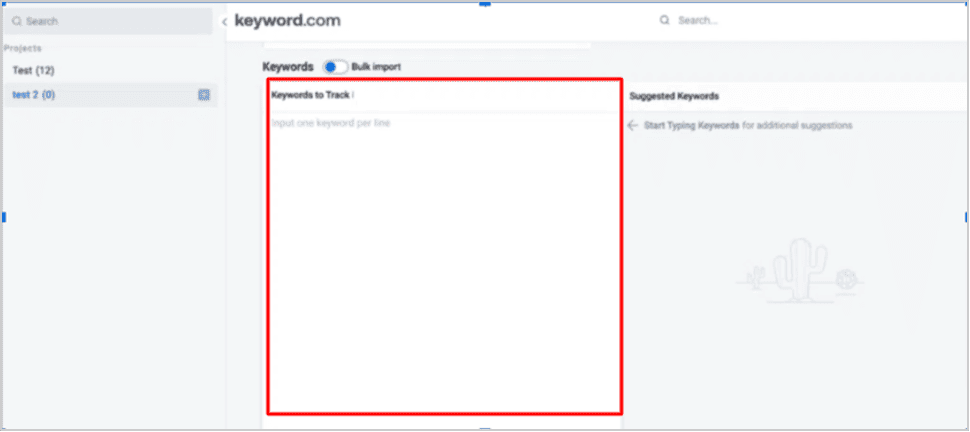
Specify your location, select the language, and ensure the “ignore local listing” option is turned off.
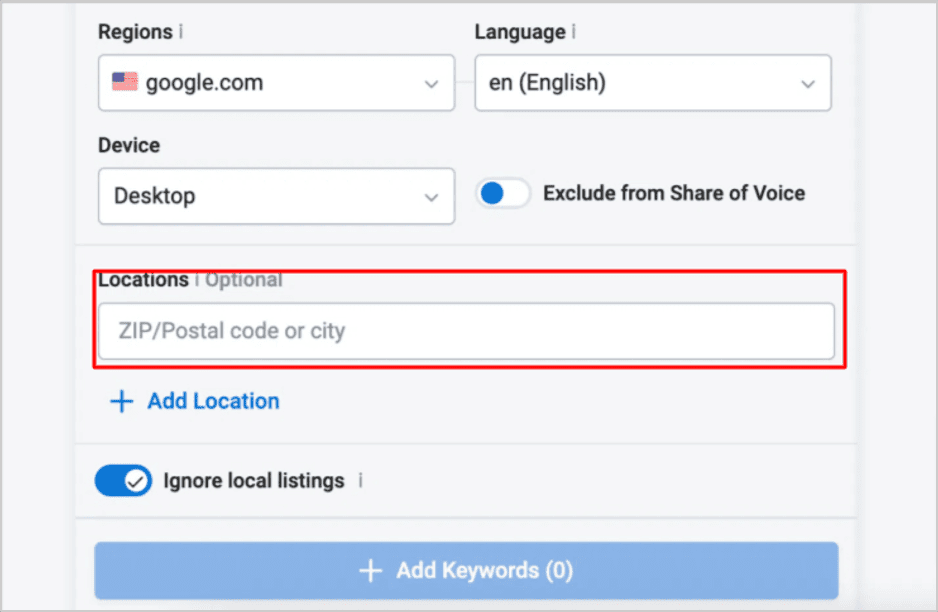
Specify your location, select the language, and ensure the “ignore local listing” option is turned off.
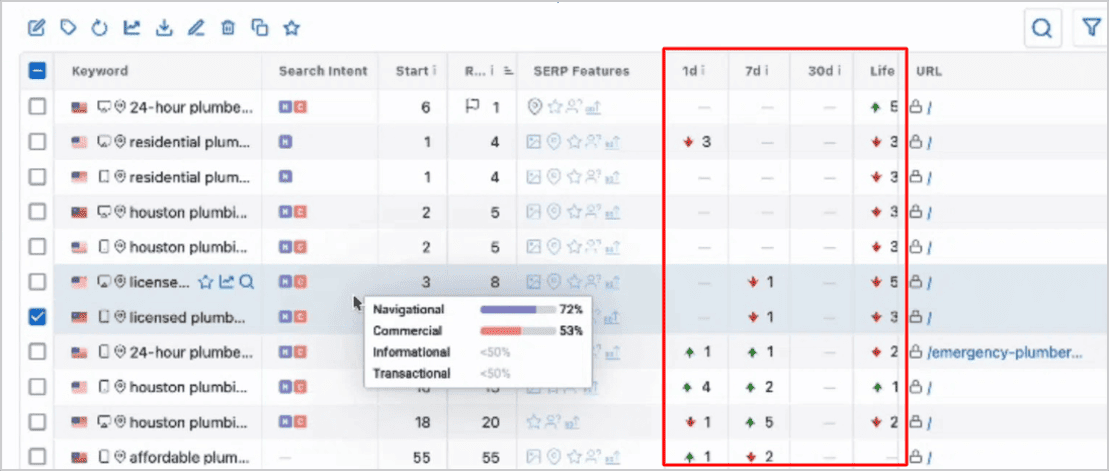
Combining insights from tools like Ahrefs and Keyword.com helps you connect the dots between influencer collaborations and your local SEO success. Plus, you’ll have precise data to know what’s working and where there’s room to improve.
Take Action and Increase Local SEO Performance With Influencer Marketing
By now, it’s clear that finding and engaging the right local influencers isn’t about luck but about strategy. Set clear goals, choose influencers with authentic ties to your community, and ensure their values align with your brand.
There are plenty of ways to discover these influencers. Use manual methods like social media and Google searches, or streamline the process with tools like Upfluence, Klear, and HypeAuditor.
Collaborate with influencers to create guest posts, share your content on social media, or craft authentic product reviews. These partnerships can drive traffic, earn backlinks, and generate the SEO signals your business needs to thrive locally.
Local influencer marketing is a powerful tool for SEO, but success depends on tracking your progress, assessing results, and refining your strategy.
Ready to increase local SEO performance with influencer marketing? Sign up to Keyword.com for a 14-day free trial and start monitoring your keywords today.

